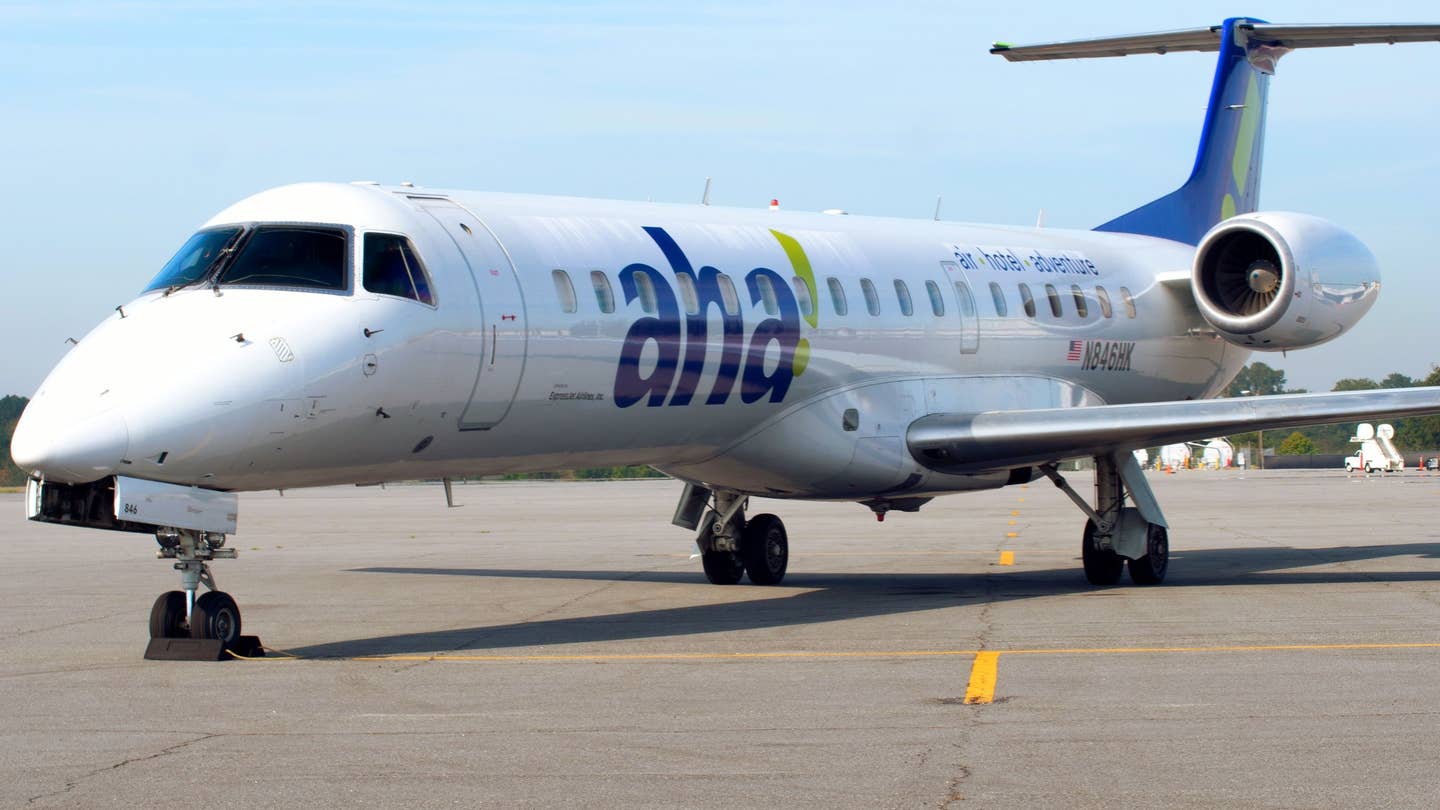ExpressJet Files Chapter 11 Bankruptcy, Furloughs 1,300 Pilots
The airline has ceased operations after failing to turn a profit.

The company rebranded itself as “Aha!” Based in Reno, Nevada, the airline started with only four airplanes, targeting the boom in leisure travel. [Courtesy: Aha! Airlines]
Regional carrier ExpressJet Airlines, once among the fastest-growing airlines in the western U.S., announced Tuesday it has filed for Chapter 11 bankruptcy protection, planning to cease all flight operations and furlough approximately 1,300 pilots.
Despite reporting “exceptional operating performance for July 2022” earlier this month, the airline has done an about-face. In a statement, ExpressJet chairman and CEO Subodh Karnik said, “A combination of conditions led us to this decision,” in which, despite their best efforts, “termination of operations was in the best interest of our stakeholders.”
The 1,300 furloughed pilots are protected under a collective bargaining agreement that the Air Line Pilots Association (ALPA), the largest pilot union, established with the airline. A provision in the agreement allows the furloughed ExpressJet pilots to be hired by another airline so that they can begin flying again with reduced training.
How We Got Here
When travel disruptions caused by the pandemic in 2020 forced United Airlines (NASDAQ: UAL) to end its United Express contract with ExpressJet and transfer those operations to CommutAir, ExpressJet’s operation was severely damaged by the loss of business. That September, ExpressJet operated its last revenue flight from Memphis International Airport (KMEM) to George Bush Intercontinental Airport (KIAH) in Houston, after which approximately 3,000 people lost their jobs.
Introducing ‘Aha!’
However, a year later, in July 2021, ExpressJet gained approval from the Department of Transportation to restart commercial flights. The company rebranded itself as “Aha!” Based in Reno, Nevada, the airline started with only four airplanes, targeting the boom in leisure travel. At its peak, ExpressJet operated more than 450 aircraft. As Aha!, it would focus on 11 regional routes affected by the pandemic and offer ad-hoc charter services. Using its ERJ-145 fleet, it restarted under the Aha! brand in October 2021, with its first flight being a charter flight.
No Path to Profitability
In a July 2022 press release, the airline stated that it completed 100 percent of its flights with a 95.6 percent on-time arrival rate; but in its bankruptcy court filing, the airline said that in July, it operated at a $17 million loss. Moreover, it said it couldn’t foresee a path toward profitability.
Effective August 23, the airline ended service and filed for Chapter 11 bankruptcy in Delaware. Typically, Chapter 11 bankruptcy gives a company some wiggle room to reset itself under government supervision, while Chapter 7 bankruptcy is usually reserved for closing shop altogether. In a court document, the company said in this case, its objective is to liquidate its assets and auction them off. The airline said it deliberately filed for Chapter 11 so that it could pay back its creditors.
CEO Points to a Number of Factors
Karnik cited a lack of growth due to limited aircraft availability, as well as the company’s failure to quickly establish a passenger servicing infrastructure at smaller airports. Moreover, despite a widespread post-pandemic rebound in travel that helped most U.S. airlines return to profitability, Karnik said ExpressJet’s revenue was poor. He attributed the low revenue to the impact of COVID-19 variants and management’s inability to establish hotel bundles to attract customers. Finally, despite larger airlines being able to rake in record profits by passing higher fuel prices on to customers, the ExpressJet CEO said fuel and other costs took an unexpected toll on his airline’s finances.
ExpressJet To Repay Creditors Before Closing Shop
With operations coming to a halt, the airline has begun laying off employees and plans to return its leased airplanes to its parent companies. In its court filing, the airline said its largest creditor, the Small Business Administration (SBA), is owed $10 million for a PPP loan. The airline also owes the Department of Treasury $3.9 million for a Cares Act Loan the airline received to protect wages at the height of the pandemic. The airline listed 18 more of its largest creditors. They range from insurance companies to maintenance providers.

Subscribe to Our Newsletter
Get the latest FLYING stories delivered directly to your inbox






